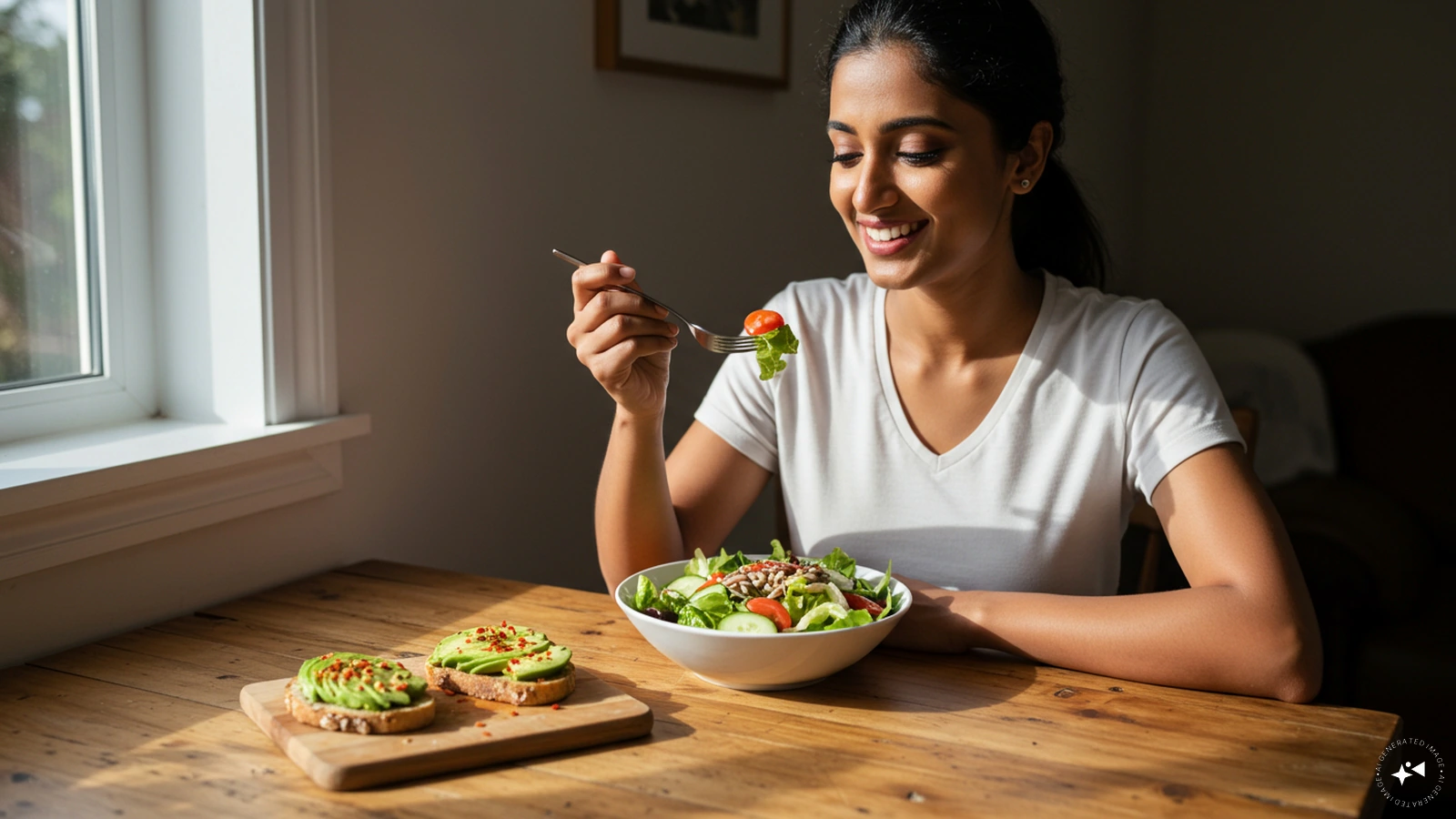Copyright news18

In a world where “plant-based” has become a buzzword, India stands quietly self-assured, a country whose culinary traditions have always celebrated plants, pulses, grains, and greens, not as a passing trend but as a way of life. Long before veganism entered global food vocabulary, Indian kitchens were already practising it, through thrift, geography, spirituality, and instinct. The global vegan movement might frame itself as progressive, but in India, it feels more like a homecoming. A Heritage of Plant-Forward Wisdom “Vegetarianism precedes veganism here,” says Chef Milan Gupta, Corporate Chef & Executive Vice President, Operations, Rosetta Hospitality. “Our cuisine is inherently aligned to plant-based recipes and nutrition due to both tradition and necessity.” India’s diverse geography and climate created not one, but many plant-based food cultures each evolving from what grew naturally in its region. “The complexity in Indian cooking comes from spices and aromatics, tamarind, amchur, asafoetida not from meat or dairy,” Gupta explains. “Dals, lentils, pulses, and grains form the foundation of our protein-rich diet.” This foundation, built on local wisdom and sustainability, is what the global plant-based movement is now striving to emulate. Balaji M, CEO and Director, Dolci, agrees. “India’s hyperlocal cuisines have always celebrated produce, grains, and legumes that grow abundantly in their regions, long before ‘plant-based’ became a global movement.” From lentil-rich dals in the North to coconut-laden curries in the South, he points out, Indian cooking has always prized balance and nourishment. “What makes Indian cuisine uniquely aligned with veganism is that it’s not driven by substitution or trend, it’s rooted in culture and mindful eating.” The Power of Indigenous Ingredients What makes India exceptional is not just the breadth of its vegetarianism, but the depth of its biodiversity. Gupta lists millets like ragi and jowar, foraged greens such as bathua and pui saag, and indigenous pulses like horse gram and moth beans as unsung vegan heroes. “These ingredients are nutrient-dense, gluten-free, and offer immense flavour complexity. They showcase India’s natural alignment with a vegan-forward world,” he says. Suresh Shetty, Director, Cahoots, echoes the sentiment: “Millets, lentils, jackfruit, moringa, and amaranth stand out as exceptional vegan ingredients. Each region offers its own wealth from kokum and tamarind in the coastal belt to bajra and jowar in the drylands. These ingredients are deeply sustainable and reflective of India’s biodiversity.” Even in a contemporary kitchen, these humble ingredients can hold their own against global fine dining ingredients not through mimicry, but through integrity. Modern Plates, Ancient Roots Much of what passes for “innovative vegan cuisine” abroad already exists within Indian culinary traditions. The challenge today is not invention, it’s reinterpretation. Gupta believes modernity and authenticity can coexist. “The goal is to elevate, not alter,” he says. “We refine plating and highlight textures, but we stay true to the essence.” His approach marries tradition with technique emulsifying, clarifying, or dehydrating indigenous ingredients to reveal their natural brilliance. For Balaji, innovation is about rediscovery rather than reinvention. “Our age-old recipes already embody what the world calls ‘contemporary dining’: seasonal produce, minimal processing, and honest flavours,” he notes. “By highlighting textures, using artisanal ingredients, and giving food a sense of story, even the most humble dish can feel elevated and relevant.” Shetty adds that contemporary presentation can help reconnect people to heritage. “We might elevate a millet khichdi with modern plating, or pair a South Indian stew with artisanal bread instead of rice,” he says. “The idea is to retain familiarity through flavour while appealing to modern aesthetics.” Sustainability as Philosophy If veganism is the outcome, sustainability is the method. Across India’s kitchens, both traditional and professional, chefs are increasingly aligning their menus with the cycles of the land. “Freshness is key harvest-driven, hyperlocal sourcing ensures that nothing is wasted,” says Gupta. “Root-to-stem cooking allows us to use every part of a vegetable, even the non-usable bits lend flavour to stocks and stews.” At Dolci, Balaji extends this philosophy into dessert-making. “We work closely with local producers to source fresh, seasonal ingredients, whether it’s fruits in our desserts or herbs in savoury dishes,” he explains. “Cooking with what’s naturally available makes food more vibrant and sustainable.” Shetty agrees: “Our menus evolve with the harvest, winter greens, native tubers, summer fruits ensuring freshness and minimal carbon footprint. It’s how food stays relevant, exciting, and responsible.” The Future Lies in Our Past As veganism becomes mainstream, India finds itself not playing catch-up, but setting the pace. The world’s shift toward mindful, sustainable eating only reaffirms what Indian kitchens have practiced for centuries. Gupta’s advice to young chefs captures the essence of this philosophy: “Stay honest, be authentic, and celebrate the ingredient. Don’t try to create a ‘mock’ version of something else focus on flavour, balance, and tradition.” Balaji agrees that the future of vegan dining isn’t about novelty, but about integrity. “Diners today are looking for stories and substance, not just labels,” he says. “If chefs can combine cultural authenticity with creativity, India’s vegan offerings can stand proudly on any global table.” In a world that’s rediscovering the beauty of less, less waste, less harm, less excess, India’s kitchens hold the blueprint. Not just for how to cook, but for how to live: rooted, balanced, and in harmony with what the earth gives us.



